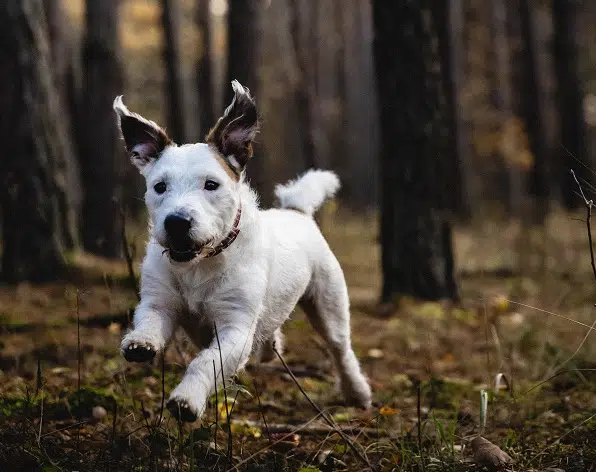Home » Blog » Pet » Pets: Understanding Them » The Jumpy, Joyful Jack Russell
Categories
Tags
animal welfare
breed profile
buying a car
buying a pet
Car
car accessories
car care
car features
car insurance
Car safety
car sales
car service
cat
cat behaviour
cat body language
Cat Breeds
cat food
cat insurance
comprehensive car insurance
Dog
Dog Behaviour
dog body language
Dog Breeds
dog food
Dog Insurance
dog training
eco friendly cars
Kitten
New Car
pet accessories
pet activities
Pet Adoption
pet breeders
pet days of the year
pet fun stuff
Pet Health
pet insurance
pet parenting
Pet Safety
pet services
Puppy
rescue pets
road safety
road trip
safe driving
Recent Blog:
Facebook Posts
6 hours ago
True or false: A stiff brake pedal can stop your car from starting? Answers here…![]()
![]() 3 Reasons For a Stiff Brake Pedal and Car That Won't Start –
... See MoreSee Less
3 Reasons For a Stiff Brake Pedal and Car That Won't Start –
... See MoreSee Less
3 Reasons for a Stiff Brake Pedal and Car That Won't Start
www.pd.com.au
Help! My car isn't starting and the brake pedal is stiff - why?! First of all, if your brake is stiff and car won't start then you've already pieced2 days ago
Growing old sometimes means we can’t take care of pets anymore. Find out some advice on what to do when this happens:![]()
![]() Senior Pet Parents – Contingency Plans for Your Pet –
... See MoreSee Less
Senior Pet Parents – Contingency Plans for Your Pet –
... See MoreSee Less
Senior Pet Parents' Contingency Plans for Pets
bit.ly
Sometimes senior pet parents need more downtime. For older pet owners, this can be tricky to navigate if their dog or cat is full of beans and wants to4 days ago
Celebrating World Vet Day by expressing our gratitude to all the wonderful vets out there! You're the real heroes for our fluffy companions. #WorldVetDaye#ThankYouVetsu#PDPetsdpets
... See MoreSee Less
With their white and cinnamon coats and lively personalities, the Jack Russell Terrier (Jack Russell for short) is one of Australia’s most popular breeds.
These pint-sized balls of energy were originally bred to hunt foxes, and Jack Russell owners will testify to their prowess at catching small critters.
Jack Russells are not for the docile owner. They require a lot of exercise and play to get out their energy. Cooping up a Jacky in a small apartment or home is not a good idea. They don’t do well with boredom and may resort to chewing, barking, or other neurotic behaviour to alleviate it.
If you do have to leave you dog alone for many hours a day, it’s a good idea to consider a doggy daycare where they can get rid of their excess energy in a healthy way.
A Jack Russell is in its element when it’s racing around, catching a ball, jumping, or given a job or activity to do. Find out more about this beloved pup below.

Jack Russell breed characteristics
Breed: Terrier
Height: 25-38cm
Weight: 6-8kg
Life span: 13-15 years of age
The Jack Russell Terrier was bred in the south of England 200 years ago by Parson John Russell. Russell aimed to create a working terrier who could hunt with other hounds. The Jacky could bolt foxes from their dens so the hounds could chase them.
Before people became cognisant of the cruelty of tail docking, it was said the perfect length to dock a Jack Russell’s tail was one hand’s width – since one could drag them out of a fox hole by their tail.
Of course, today we know tail docking is cruel and unnecessary and can even affect a dog’s balance.
Once a hunter…
This hunting extinct has never left the Jack Russell. They’re partial to wandering and exploring, and many JT owners will tell you that they’ll escape very quickly from a yard if not fenced in properly.
They’re described as ‘recreational barkers’, meaning they’ll bark for enjoyment, and they also enjoy digging. Jack Russells make great watch dogs and are very assertive. Their bravery sometimes gets them in trouble, as they won’t think twice about taking on a bigger dog or even a snake.
Jack Russells have three types of coats: smooth, broken and rough (coarse, longer straight hair). All the coats tend to shed (another thing JT owners will attest to). Jack Russells are predominantly white in colour with black or tan markings. They can also be white, black and tan – and are then called tricolour. Apparently the white in the Jacky’s coat helped hunters see them in the fields.

Jack Russell health
Jack Russell Terriers are a pretty robust breed and given the proper care their life expectancy is about 15 years. Breeders have managed to prevent direct in-line breeding, thus protecting their gene pool.
However, recessive genes of certain lines may still be unwittingly bred, and there are some common health issues in the Jacky.
Teeth
Jack Russells are prone to tartar build-up and gum disease – with 80% of them affected by the age of two. Tartar build-up can lead to infection of the gums and roots of the teeth. Regularly checking their teeth and brushing with a dog-friendly toothpaste is a good idea (read about dog teeth cleaning to help make it simple). If tartar build-up is at an advanced stage, you may have to book Fido into the vet for a cleaning.
Eyes
Older Jack Russells are prone to cataracts, diminishing sight, and blindness. The inherited disease Primary Lens Luxation (PLL) causes the tiny fibres that hold the lens to break down. When this happens, the lens drops out of place. If it happens to fall forward, it can block the normal circulation in the eye and cause secondary glaucoma. Your Jacky might need surgery to remove the loose lens and stop pain.

Hips and elbows
Unfortunately, this tough little dog is prone to hip and elbow dysplasia. This causes the joints to develop improperly and results in arthritis. As your Jack Russell Terrier gets older, you may notice stiffness or lameness in their legs as a result of this. This is also more common in overweight dogs. Arthritis can be dealt with via medication, and may possibly need surgery.
Ears
Jack Russells have been known to inherit deafness. Some hearing loss may also cause a severe ear infection. If you notice your Jacky isn’t responding to you as they used to, it’s a good idea to go for a check-up.
Skin
There are several skin diseases that can affect your Jacky. These include a yeast infection called Malassezia dermatitis, which can infect their ears and cause redness and brown waxy discharge. When it infects the skin it can lead to greasy, hairless areas and a characteristic odour.

Insurance for your beloved Jack Russell
With the brave Jacky so prone to getting themselves into a bind, you’ll definitely want to consider dog insurance. You shouldn’t have to worry about affording medical bills if they happen to get scrappy with a bigger dog or try to take on a snake.
If possible, you should take it out early so you don’t have any problems with pre-existing conditions and pet insurance coverage.
Plus, PD Insurance will give you one (or more) months free when you take out a policy. Why not get an obligation-free quote today?
Share On:




